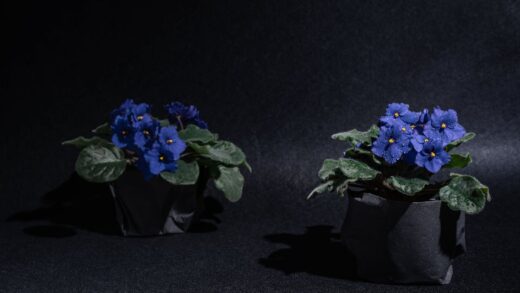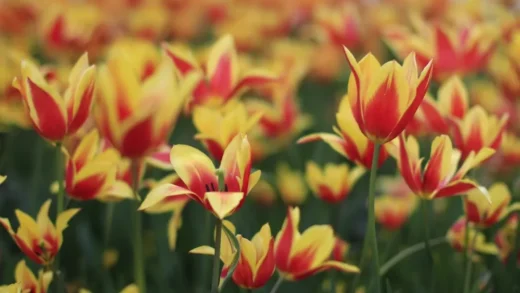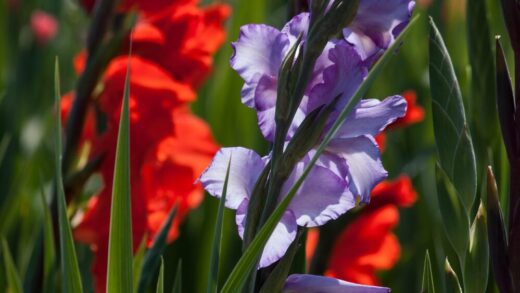To achieve the breathtaking floral spectacle that brazilian jasmine is renowned for, a consistent and well-balanced supply of nutrients is absolutely indispensable. This vigorous, fast-growing vine is a heavy feeder, meaning it rapidly depletes the nutrients available in its soil to fuel its lush foliage and, most importantly, its profuse and continuous blooming. Simply relying on the nutrients present in the initial potting mix or garden soil is insufficient; regular fertilization throughout the active growing season is not just beneficial, it is essential. Understanding the specific nutritional needs of the plant and implementing a proper feeding regimen is the key to unlocking its full potential, ensuring a season-long display of vibrant, trumpet-shaped flowers that are the hallmark of a healthy and well-cared-for Mandevilla.
The primary nutrients that all plants require are nitrogen (N), phosphorus (P), and potassium (K), often referred to as macronutrients. For a flowering plant like Mandevilla, the balance of these three elements is crucial. Nitrogen is primarily responsible for promoting healthy, green leafy growth. While essential, an excess of nitrogen at the expense of other nutrients can lead to a lush, beautiful plant with very few flowers. This is a common issue for gardeners who use a general-purpose, high-nitrogen fertilizer. The plant looks wonderfully healthy but fails to produce the desired blooms.
Phosphorus, the ‘P’ in N-P-K, plays a vital role in a wide range of plant functions, including root development, energy transfer, and, most critically for Mandevilla, the formation of flower buds and blooms. A fertilizer that is relatively high in phosphorus is therefore highly recommended during the growing season to encourage and sustain a prolific flowering display. This is why many fertilizers marketed as ‘bloom boosters’ or formulated for flowering plants will have a higher middle number in their N-P-K ratio, for example, 10-20-10.
Potassium, the ‘K’, contributes to the overall health and vigor of the plant. It is essential for regulating water movement within the plant, strengthening its resistance to diseases, and improving the quality of the flowers. A balanced supply of potassium ensures that the plant is robust and resilient, able to withstand environmental stresses while efficiently utilizing other nutrients. Therefore, an ideal fertilizer for brazilian jasmine provides sufficient nitrogen for healthy foliage, a higher level of phosphorus to promote abundant blooms, and adequate potassium for overall plant vitality and strength.
In addition to the primary macronutrients, Mandevilla also requires a range of micronutrients, albeit in much smaller quantities. These include elements such as iron, magnesium, manganese, and calcium, which are crucial for various enzymatic and metabolic processes. A high-quality, complete fertilizer will contain these essential trace elements. A deficiency in any of these micronutrients can lead to specific symptoms, such as chlorosis (yellowing of leaves with green veins), which is often caused by a lack of iron or magnesium. Using a well-formulated fertilizer helps to prevent these issues from arising.
More articles on this topic
Choosing the right type of fertilizer
When it comes to selecting a fertilizer for your brazilian jasmine, you have several options, each with its own advantages. Water-soluble or liquid fertilizers are a very popular choice for container-grown plants. These are powders or concentrated liquids that are mixed with water and then applied to the plant during a regular watering session. Their main benefit is that the nutrients are immediately available for the plant’s roots to absorb, leading to a quick response. This makes them excellent for providing a regular, controlled dose of nutrients throughout the growing season.
Slow-release fertilizers offer a more hands-off approach to feeding your Mandevilla. These come in the form of pellets or granules that are incorporated into the soil or scattered on the surface at the time of planting. Each granule has a special coating that breaks down gradually over time, releasing a small, steady supply of nutrients over a period of several months. This method is convenient and reduces the risk of over-fertilization. However, it offers less control over the nutrient supply, which can be a drawback if the plant develops a specific deficiency that needs a quick remedy.
Organic fertilizers are another excellent option for those who prefer a more natural approach to gardening. These are derived from natural sources such as compost, well-rotted manure, bone meal, or fish emulsion. Organic fertilizers not only supply nutrients to the plant but also improve the soil structure and encourage beneficial microbial activity. They tend to release their nutrients more slowly than synthetic liquid feeds as they need to be broken down by soil organisms. While they provide a gentle, long-lasting source of nutrition, they may not be as fast-acting if the plant is in immediate need of a nutrient boost.
Ultimately, a combination of fertilizer types can often provide the best results. For example, you could incorporate a slow-release granular fertilizer into the potting mix at the beginning of the season to provide a baseline level of nutrition. This can then be supplemented with a regular application of a water-soluble, high-phosphorus liquid fertilizer every few weeks during the peak blooming period. This integrated approach ensures the plant has a continuous and balanced supply of all the nutrients it needs to thrive and produce a spectacular floral display all summer long.
More articles on this topic
The fertilization schedule
Establishing a consistent fertilization schedule is key to keeping your brazilian jasmine healthy and productive. The feeding regimen should be closely aligned with the plant’s natural growth cycle. Fertilization should begin in the spring, just as the plant is breaking dormancy and you start to see the first signs of new growth. This initial application provides the plant with the energy it needs to produce new stems and leaves, setting the foundation for the upcoming flowering season.
Throughout the spring and summer, which is the period of active growth and peak blooming, the plant should be fed regularly. For those using a water-soluble fertilizer, a common recommendation is to apply it every two to four weeks. Some growers prefer to use a more diluted, half-strength solution but apply it more frequently, perhaps every one to two weeks. This method of ‘weakly, weekly’ feeding provides a very steady stream of nutrients that mimics natural processes and avoids the shock of infrequent, heavy doses. Whichever frequency you choose, consistency is the most important factor.
It is crucial to always water the plant thoroughly with plain water before applying any liquid fertilizer. The soil should be moist before feeding. Applying a concentrated fertilizer solution to dry soil can scorch and damage the plant’s delicate roots, causing more harm than good. This is a common mistake that can lead to leaf burn and a general decline in the plant’s health. By watering first, you ensure the fertilizer is diluted in the soil and can be absorbed safely and efficiently by the roots.
As autumn approaches and the weather begins to cool, you should start to taper off your fertilization routine. Just as you reduce watering, you should also reduce the frequency of feeding and eventually stop altogether by mid-autumn. Continuing to fertilize late in the season can encourage the plant to produce new, tender growth that is very susceptible to damage from the cold. Stopping fertilization signals the plant to slow down and prepare for its winter dormancy, a necessary rest period that allows it to conserve energy for the next growing season. No fertilizer should be given during the winter months.
Recognizing nutrient deficiencies
Observing your plant’s leaves is one of the best ways to diagnose potential nutrient deficiencies. The color and condition of the foliage can provide clear clues as to what might be lacking in its diet. One of the most common symptoms is chlorosis, which is a general yellowing of the leaves. If the yellowing is uniform across the entire plant, especially on the older, lower leaves, it often points to a nitrogen deficiency. The plant is moving this mobile nutrient from its older leaves to support new growth.
A different pattern of chlorosis can indicate other deficiencies. For example, intervenal chlorosis, where the leaves turn yellow but the veins remain green, is a classic sign of a magnesium or iron deficiency. This symptom often appears on the newer leaves first. While your fertilizer may contain these micronutrients, their uptake can be blocked if the soil pH is too high (too alkaline). If you suspect a micronutrient issue, a foliar spray containing chelated iron and other trace elements can provide a quick fix, as the leaves can absorb these nutrients directly.
A phosphorus deficiency, while less common, can manifest as stunted growth and leaves that take on a dull, dark green or even purplish hue. Since phosphorus is critical for flowering, a sure sign of a deficiency is a plant that produces plenty of leaves but very few or no blooms, despite receiving adequate sunlight. This is a clear signal to switch to a fertilizer with a higher phosphorus content to stimulate the production of flower buds.
A lack of potassium can lead to weak stems and a general lack of vigor. A tell-tale sign is the yellowing or browning of the leaf margins and tips, starting with the older, lower leaves. The plant may also be more susceptible to diseases. If you observe any of these symptoms, the first step is to review your fertilization practices. Ensure you are using a complete, balanced fertilizer at the correct frequency. If the problem persists, it may be worth conducting a soil test to get a more precise understanding of the nutrient levels and pH of your growing medium.
The risks of over-fertilization
While feeding is crucial, it is also possible to have too much of a good thing. Over-fertilization is a common problem that can be just as damaging, if not more so, than a nutrient deficiency. Applying too much fertilizer, or applying it too frequently, can lead to a toxic buildup of mineral salts in the soil. This high concentration of salts can actually pull moisture out of the plant’s roots through osmosis, a process known as ‘fertilizer burn’. This damages the roots, hindering their ability to absorb water and nutrients.
The symptoms of fertilizer burn can look surprisingly similar to those of underwatering. The plant may wilt, and the leaves, particularly the lower ones, may turn yellow or brown and drop off. A key distinguishing sign of over-fertilization is often a white, crusty residue that forms on the surface of the soil or around the rim of the pot. This crust is the physical accumulation of excess fertilizer salts. In severe cases, the entire plant can go into decline and may eventually die if the issue is not addressed.
If you suspect you have over-fertilized your brazilian jasmine, you must act quickly to remedy the situation. The primary treatment is to leach the excess salts from the soil. To do this, take the plant to a sink or an outdoor area and slowly pour a large volume of lukewarm water through the pot. The amount of water should be at least two to three times the volume of the container. This heavy flushing will help to dissolve the accumulated salts and wash them out through the drainage holes.
After leaching the soil, allow the pot to drain completely and do not fertilize the plant again for at least a month, allowing it time to recover. In the future, be sure to follow the fertilizer package directions carefully, and consider erring on the side of caution by using a slightly more diluted solution. It is always easier to add more nutrients if a deficiency appears than it is to correct the damage caused by a toxic excess. A measured and observant approach to feeding will ensure your Mandevilla receives the nutrition it needs without being overwhelmed.




















